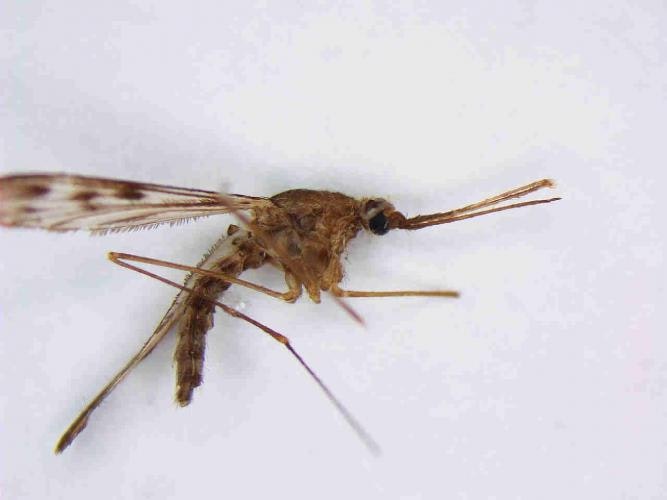Seasonal Mosquitoes

California Salt Marsh Mosquito (Aedes squamiger)
Adults emerge in March and remain active through June. Breeds in coastal salt marshes but may fly up to 20 miles. Bites aggressively during the day. May become a major pest to humans.

Summer Salt Marsh Mosquito (Aedes dorsalis)
Adults are active late spring into the fall. Breeds in tidal or reclaimed marshes, but may fly long distances. Aggressively bites during the day. Can be a major pest to humans and a secondary vector for Western Equine Encephalitis.

Fresh Water Mosquito (Aedes washinoi)
Adults emerge late winter to early spring. Breeds in freshwater ground pools and shaded pits near rivers or streams. Does not fly more than 1/2 mile from breeding habitat. Bites humans during the day. Can become a localized pest.

Large Winter Mosquito (Culiseta inornata)
Active fall through spring. Larvae are found in sunlit water with some shade. Rarely feeds on humans. Not usually a major vector or pest.

Culiseta particeps
Present year-round. Breeds at edges of natural water sources. Prefers large animals but will feed on humans in shaded areas. Not usually a major pest or vector.

Western Treehole Mosquito (Aedes sierrensis)
Active in spring, but can be found in summer and fall. Breeds in treeholes or small containers. Aggressive biter, both day and night, particularly in shaded areas. Major pest to humans and vector of dog heartworm. Learn more HERE.
Southern California Malaria Mosquito (Anopheles hermsi)
Adult activity peaks in June and July. Breeds in matted cattails and roots of willows, river margins, streams, and pools. Aggressive biters at sunrise and sunset. Capable of transmitting malaria.

Woodland Malaria Mosquito (Anopheles punctipennis)
Adults are active in spring and summer. Breeds in grassy pools along creeks and permanent rivers. Mostly feeds on animals other than humans, but is capable of transmitting malaria.

Anopheles franciscanus
Active in spring and summer. Larvae are found in shallow, sunlit pools at the edge of streams. Rarely bites humans, but is capable of transmitting malaria.

Anopheles occidentalis
Active in spring and summer. Larvae live in small pools and moving streams, ponds, and lakes. Rarely bites humans, but is capable of transmitting malaria.
